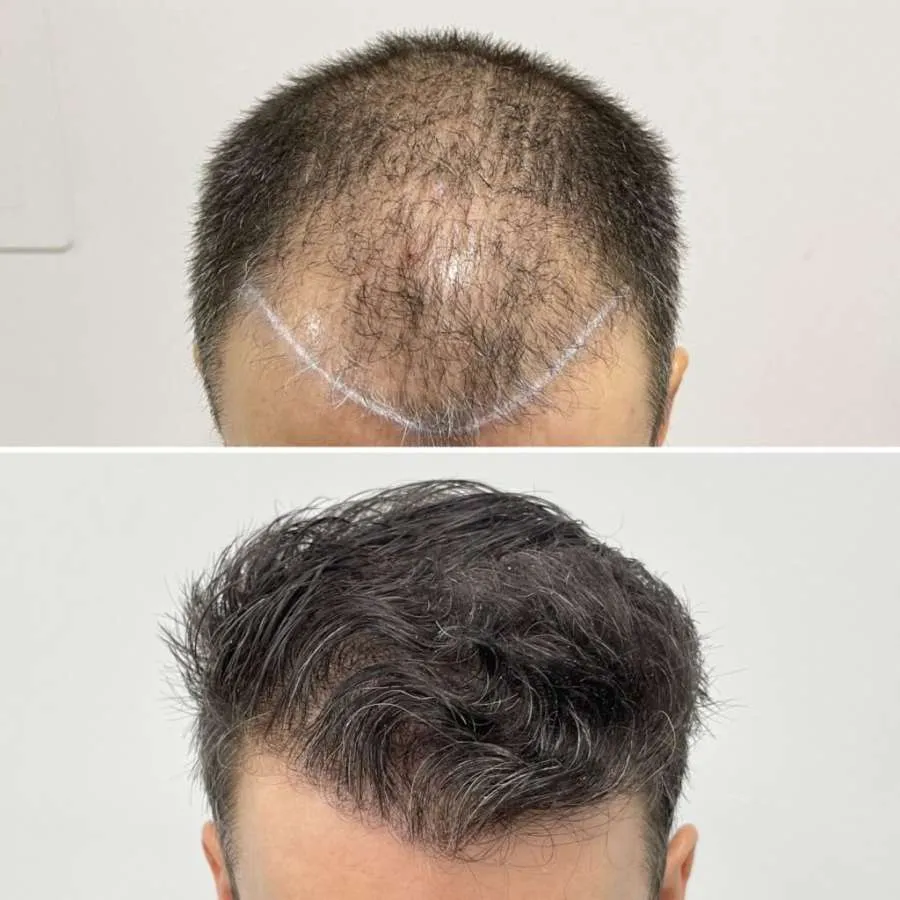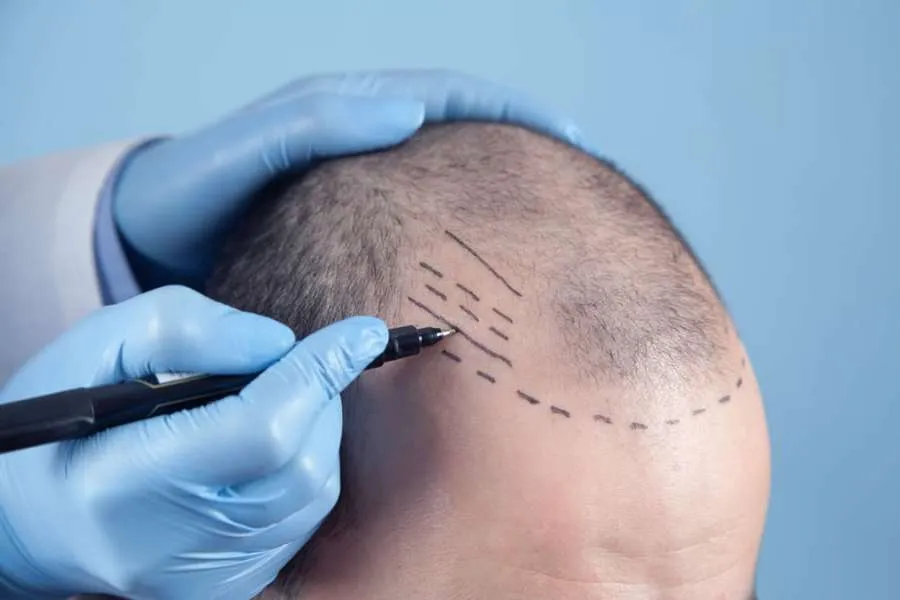Life after a Hair Transplant: How to maintain your results and keep your confidence for years to come
- 22-08-2025
- Health
- collaborative post
- Photo Credit: Freepik / Bristol FUE Hair Transplant Clinic
You’ve done the big thing. You researched clinics, carved out time, sat through the procedure, and now you’re living with a scalp that’s healing and a future hairline that’s slowly coming to life. This is the part most people don’t talk about enough: the months after a hair transplant when patience, simple routines, and smart choices quietly compound into noticeable confidence.
Think of it less as a medical recovery and more as a lifestyle project. Your day-to-day habits, how you sleep, wash, train, travel, manage stress, and even take photos, can make a meaningful difference to how your results look and how you feel.
Here’s the plan: a clear, stage-by-stage guide that keeps things practical. We’ll cover the first 30 days (when calm, clean, and gentle is the motto), the “shedding season” of months 2–4, the exciting density ramp of months 5–9, the final polish through months 10–18, and a long-term maintenance strategy that protects your investment. It’s straightforward, sustainable, and designed to fit real life.
1) The First 30 Days: Calm, clean, gentle
Days 0–3: Protect the grafts and stay comfortable
Your body’s top job is healing; your top job is not getting in the way. Sleep slightly elevated (two pillows or a wedge) to reduce swelling.
Avoid touching, rubbing, or bumping the grafted area. Use any sprays your clinic recommended (often saline in the early days) exactly as instructed. If there’s itchiness, resist the urge to scratch; gentle tapping at a distance or a cool room can help. Keep screens at eye level so you’re not craning your neck under pressure. If you work, treat these first days like “soft focus” time: admin, reading, light emails - nothing sweaty, rushed, or risky.
Days 4–7: First washes and scab care
This is usually when the first gentle washes begin. Think of the process like removing icing from a cake without damaging the crumbs beneath: tepid water, a clinic-approved gentle shampoo, and the softest possible touch.
According to a leading Bristol FUE Hair Transplant Clinic, get a cup of water into your hands and let it flow; pat, don’t rub. Hats are fine if your clinic says so, choose breathable fabric and a loose fit that doesn’t cling to or scrape the grafts. Continue to avoid direct sun and heat (saunas, steam rooms, hairdryers on high). If you are based in places close to the sea or warm weather, be careful not to overexpose yourself. For patients who have used a hair replacement surgeon in Bristol, this is likely to be highly relevant to you.
Days 8–14: Back to desk life, still on low impact
Most people feel socially “presentable” again by the end of week two as redness fades and scabs disappear.
You can usually return to desk work and light walking. Delay running, lifting heavy, or contact sports; anything that spikes blood pressure in your scalp or risks friction is off-limits. If you have to travel, plan soft itineraries: aisle seats, neck pillows that don’t rub the donor area, and minimal overhead-bin wrestling.
Days 15–30: Gentle normality
You’re in a groove. Keep washing gently, moisturising the scalp if recommended, and staying out of harsh sun. You can increase activity a touch - light cycling, easy resistance bands, while still avoiding strain, helmets that press on donor zones, and pools (chlorine and vigorous drying aren’t your friends yet). Most of all, trust the quiet work your body is doing. The “big change” you’re looking for won’t show up this month - and that’s normal.
Micro-checklist for Month 1:
- Sleep was elevated for the first several nights.
- Wash gently; pat dry.
- Avoid the sun, heat, helmets, and heavy sweat.
- Wear loose, breathable hats only when allowed.
- Keep expectations realistic: healing now, results later.
2) Months 2–4: The shed & the mindset
Welcome to the phase that tests your patience. Transplanted hairs often shed in the first few weeks to months, think of it as the follicle pressing the reset button. It can be unsettling, but it’s not failure; it’s physiology. Under the surface, follicles are transitioning and preparing to sprout new hairs. This is where routine and mindset matter.
How to track progress without obsessing
Set a simple photo rhythm: once a month, same place, same lighting, same angles (front, both temples, crown, and a top-down shot after combing). Take one wet and one dry photo - wet photos reveal scalp coverage; dry photos show styling reality. Resist daily micro-inspections. Hair grows too slowly for day-to-day analysis, and constant checking only fuels anxiety.
Styling moves that help confidence:
- Ask your barber for shape, not bulk. Gentle layering creates the illusion of volume without demanding density you don’t yet have.
- Low heat if you must blow-dry; a brief cool blast at the end helps set shape.
- Volumising powder or a light paste can add lift; go easy to avoid buildup.
- If fibres help, apply sparingly and wash thoroughly—cling to hair, not grafts.
Lifestyle tuning
Sleep, hydration, and stress management support healthy hair growth cycles. A couple of 20–30 minute walks a day, some light strength work, and regular bedtimes do more for your hair (and mood) than you’d think. If you’re feeling wobbly about the shed, talk about it: with your clinic, a partner, or a friend who gets it. Confidence is a team sport.
3) Months 5–9: The density ramp
This is when things finally get fun. Many people begin to notice new coverage and a soft halo of shorter hairs that thicken over time. You’ll catch yourself in a lift mirror or a shop window and do a double-take. It’s not a magazine “after” yet, but the trajectory is clear.
Training, travel, and everyday life
By now, most activities are back on the menu - training with intensity, swimming, and travel included.
Just add common sense: rinse hair after chlorine or saltwater, use a leave-in conditioner for slip, and avoid helmets that rub a single spot on long rides. If you’re planning a holiday, pack a gentle shampoo, a hydrating conditioner, a scalp-friendly SPF, and a cap you actually like wearing.
Barber playbook
Book trims every 4–6 weeks to harmonise donor and recipient areas. Ask for:
- Light texturising where density is still catching up.
- Soft, natural edges around the temples; avoid sharp geometric lines that highlight asymmetry while things are still maturing.
- A style that looks good at day 1 and day 25. Grow-out friendliness beats high-maintenance precision right now.
Social calendar timing
Got a wedding, big pitch, or reunion? Aim for a tidy-up 7–10 days beforehand, so the cut settles and you can fine-tune styling. If fibres or light sprays boost confidence under bright lights, great—just remove them gently that night with lukewarm water and a mild shampoo.

Before and after. Source: Bristol FUE Hair Transplant Clinic
4) Months 10–18: Final polish & honest assessment
You’re entering the maturation window. Hairs thicken, texture evolves, and coverage balances out. Some areas (temples and crown, in particular) are slowpokes; patience here pays off.
Book your “true after” thoughtfully
Your most honest set of photos usually happens between months 12 and 18. Replicate your earlier setup: same lighting, angles, and hair length. The power of side-by-sides is real, not just for your clinic’s records, but for your confidence. You’ll see improvements you’ve mentally normalised.
Satisfaction scan vs. refinement chat
Ask yourself three questions:
1. Does my hairline look like me - age-appropriate and natural?
2. Do I feel comfortable in everyday lighting without strategic caps or angles?
3. Are there small zones (temples, crown swirl) where a subtle density boost would meaningfully change how I feel?
If you’re considering refinement, approach it like a design sprint, not a fix: specific, conservative, and aligned to a long-term plan. A good clinic will discuss “design integrity” (how the hairline will age), donor management, and timing to avoid unnecessary overlap with maturing grafts.
Keep the lifestyle frame
Even at the finish line, the basics matter: sleep that doesn’t wander into 1:00am too often, hydration that isn’t just coffee, and training that includes some resistance work. Healthy routines show up in your skin, posture, energy - and yes, your hair.
5) Your Long-Term Maintenance Plan (evidence-informed)
A transplant moves hairs; a maintenance plan protects the look. You don’t need a laboratory and 19 products. You need a simple, sustainable stack you’ll do. Always discuss medical options with your clinician; the notes below are an orientation, not personal medical advice.
A) Medical adjuncts (speak to your clinician first)
- Finasteride/dutasteride (men): Often used to stabilise ongoing hair loss by targeting DHT. Dosage and route (oral vs. topical) are personalised; understand the benefits, risks, and monitoring with your doctor.
- Topical minoxidil (men and women): Can support growth and calibre; consistency matters more than concentration.
- Women’s options: Depending on the cause, clinicians may discuss topical minoxidil, spironolactone, or other targeted therapies.
- Micro-needling: A low-frequency routine (e.g., weekly) may support scalp health; sterilise devices, keep pressure light, and avoid on irritated skin.
- Low-level laser therapy (LLLT): Some choose at-home devices as a supportive modality; think “incremental help,” not miracle.
- PRP: Periodic platelet-rich plasma sessions are used by some clinics; discuss cost-benefit and realistic endpoints.
B) Lifestyle pillars that quietly compound
- Sleep: 7–9 hours with a reasonably steady bedtime is underrated hair care.
- Stress: Short, daily decompression beats occasional marathons - walks, breathwork, journalling, or 10 quiet minutes with coffee.
- Training: Two or three resistance sessions per week, plus regular walking, keeps circulation and mood in a good place.
- Hydration: Hair doesn’t love desert conditions; your skin will tell on you first.
C) Nutrition basics (simple, not faddish)
- Protein: Aiming for a reasonable daily intake supports hair (and everything else).
- Micronutrients: Iron, vitamin D, zinc, and biotin matter if you’re deficient - don’t supplement blindly; test, then target.
- Caffeine: Enjoy it, but keep an eye on sleep quality; poor sleep unravels good habits fast.
D) Scalp & haircare cadence you’ll follow
- Wash: 2–4 times weekly with a gentle shampoo; rinse thoroughly to avoid product buildup on the scalp.
- Condition: Mid-lengths and ends need love; go light at the roots to keep lift.
- Exfoliate: Occasional scalp exfoliation helps, but gentle is the rule.
- Heat & colour: Use heat protectant; keep tools at moderate temps. Colouring is typically fine once your clinic’s window has passed—start conservative and hydrate like it’s your job.
E) Product philosophy
Choose a minimalist kit you enjoy using: a gentle shampoo, a hydrating conditioner, a light styling aid that matches your hair type (powder for fine hair, cream or paste for thicker textures), and a scalp-friendly SPF. The best routine is the one you stick to all year, not the 12-step routine you abandon in a week.
F) Follow-ups & future-proofing
Even if everything looks great, schedule periodic check-ins with your clinic, at least at the 12–18 month mark, then every year or two, or sooner if you notice changes. Native hair can continue to thin over time; early conversations beat late corrections. Think like a designer: protect donor supply, honour your face’s proportions as you age, and aim for hair that reads as “effortlessly you,” not “obviously engineered.”



























































